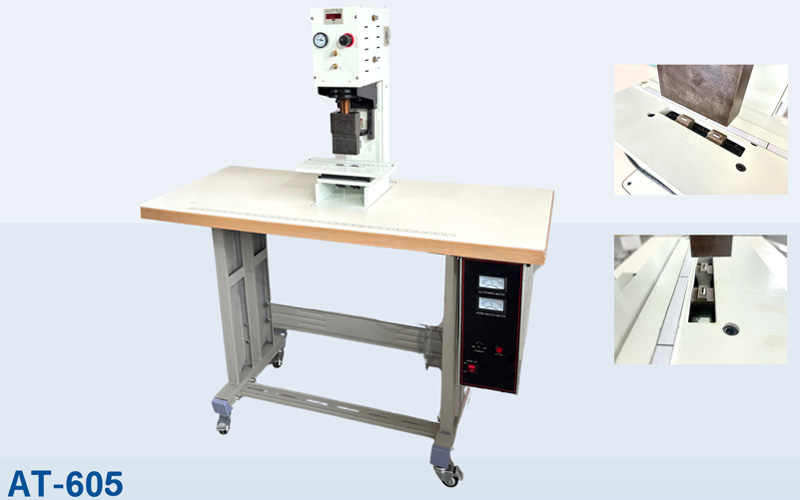In the highly competitive world of garment manufacturing, factories are constantly seeking ways to improve production efficiency, product quality, and cost-effectiveness. One innovation helping manufacturers achieve these goals is the Ultrasonic Button Holes Punching Machine—a technology that is redefining how buttonholes are created, especially in seamless garments like modern polo shirts, activewear, and technical apparel.
Unlike traditional methods that require stitching and reinforcement, ultrasonic buttonhole punching uses high-frequency vibrations to cut and seal fabric edges without physical contact. This means faster, cleaner, and more consistent buttonholes, all without the need for needles or threads.
In this article, we’ll explore the five key benefits of adopting ultrasonic button holes punching machines in a garment production line—and why they’re quickly becoming the go-to solution for forward-thinking apparel manufacturers.
1. Precise, Clean, and Consistent Buttonhole Cutting
When it comes to garment finishing, precision is everything. Traditional buttonhole machines rely on mechanical cutting or stitching processes, which can be affected by fabric thickness, tension inconsistencies, and thread breakage. This often results in irregular holes, fraying, or distortion, especially with synthetic stretch fabrics commonly used in modern sportswear.
How Ultrasonic Punching Solves This:
Ultrasonic vibration energy is used to cleanly punch through the fabric.
The cutting process simultaneously seals the edges, preventing fraying.
Every buttonhole is identical in size and shape, providing a premium, uniform appearance across all pieces.
This level of dimensional accuracy is critical for brand-name apparel where visible defects are unacceptable. With ultrasonic technology, even fine, delicate knitwear like polyester-spandex blends maintain their structure without deformation, enabling manufacturers to meet strict quality control standards with confidence.

2. Enables True Seamless Garment Construction
The rise of seamless fashion and minimalist garment construction is one of the major trends in the textile industry. Consumers now prioritize comfort and function—especially in garments like polo shirts, yoga wear, and outdoor performance apparel. Seamless construction eliminates chafing and gives the garment a cleaner, more modern appearance.
Ultrasonic button holes punching machines contribute to this trend by eliminating the need for:
Thread-based sewing
Reinforcing tapes
Visible seam lines
This technology allows designers and engineers to create functional buttonholes directly into the fabric without altering the garment’s appearance. It also opens doors to new product categories where seam-free construction is essential—such as undergarments, compression tops, and high-end sports polos.
3. Faster Production Speed and Reduced Labor Costs
Garment production lines operate on strict deadlines. Any reduction in production time, manual labor, or setup delays can significantly impact profitability. Traditional buttonhole stitching machines require skilled operators, fabric alignment, post-stitch trimming, and constant maintenance.
By comparison, the ultrasonic buttonhole punching process is:
Fully automated or semi-automated
Instantaneous (a hole is punched in milliseconds)
Free from follow-up trimming
One machine operator can oversee multiple machines, dramatically reducing labor dependency. Furthermore, the machine’s high-speed cycle times enable high-volume production with fewer bottlenecks. Many factories using ultrasonic technology report up to 50% faster throughput for buttonhole sections compared to conventional methods.
In industries where output speed determines success, this technology can offer a significant edge.
4. Superior Durability in High-Stress Areas
One concern for manufacturers moving away from stitched buttonholes is durability. Surprisingly, ultrasonic punching does more than match stitching strength—it often outperforms it in specific contexts.
Why?
The ultrasonic cutting process applies localized heat, which fuses the fabric fibers at the edge of the hole.
This edge sealing effect creates a strong, tear-resistant border.
Even under repeated stretching, washing, and mechanical stress, the hole remains intact.
For polo shirts, where buttonholes are subject to constant use, this is a critical advantage. The clean cut and sealed edges also maintain their appearance better over time—offering a longer garment life cycle, especially in commercial-use apparel like uniforms or teamwear.
Additionally, ultrasonic buttonholes are less likely to unravel, a common complaint with traditionally stitched designs after repeated washes.
5. Works with a Wide Range of Modern Fabrics
The diversity of materials used in garment manufacturing today has outpaced many traditional cutting and sewing technologies. While mechanical stitching still works well for cotton or canvas, it struggles with synthetics, technical textiles, and bonded fabrics.
Ultrasonic buttonhole punching machines are specially designed for:
Polyester and polyamide (nylon) fabrics
Spandex and elastane blends
TPU-laminated materials
Bonded or coated knits
Lightweight interlocks and double knits
These materials benefit from the melting/sealing property of ultrasonic energy, which creates a neat, strong buttonhole without the puckering, fraying, or stretching often caused by needles.
With consumer trends moving toward stretchable, moisture-wicking, and thermally bonded apparel, manufacturers using ultrasonic machines gain a clear compatibility advantage.
Bonus: Low Maintenance and Long-Term Reliability
Unlike mechanical sewing systems, which involve moving parts, oiling, needle changes, and frequent servicing, ultrasonic punching machines are low maintenance. Their core technology is solid-state vibration, meaning there are fewer wear points.
No thread tension adjustments
No needle replacements
Minimal mechanical downtime
This translates to lower long-term ownership costs and less production interruption, ensuring higher operational efficiency and smoother factory workflows.
Adaptable for Small and Large-Scale Production
Whether you’re a boutique operation offering custom polo shirts or a large OEM supplier manufacturing for international brands, ultrasonic button holes punching machines can be adapted to your production line.
For small-scale producers:
Compact models with foot-operated controls
Suitable for batch production or prototyping
Simple training requirements
For large-scale operations:
Fully automated options with programmable settings
Integration into automated garment production lines
Multi-head systems for simultaneous punching
With this flexibility, garment factories of all sizes can future-proof their operations with scalable solutions.
Final Thoughts
The Ultrasonic Button Holes Punching Machine is more than just a tool—it’s a strategic upgrade for apparel manufacturers aiming to optimize speed, quality, and product appeal. From enhancing garment durability to enabling seamless, modern aesthetics, its impact is clear.
By replacing traditional labor-intensive processes with ultrasonic precision, factories can:
Reduce labor costs
Speed up production timelines
Improve overall garment performance
Serve high-end, functional fashion markets
If you’re looking to modernize your polo shirt production line, develop technical sportswear, or enter the seamless garment market, adopting ultrasonic buttonhole punching technology is a wise investment.
Ready to Upgrade Your Factory?
As a professional, bonding film and machine manufacturer, Alster provides consultation, custom configurations, and ongoing support for ultrasonic garment equipment. Contact us today to discuss how our ultrasonic button holes punching machines can elevate your production line.
